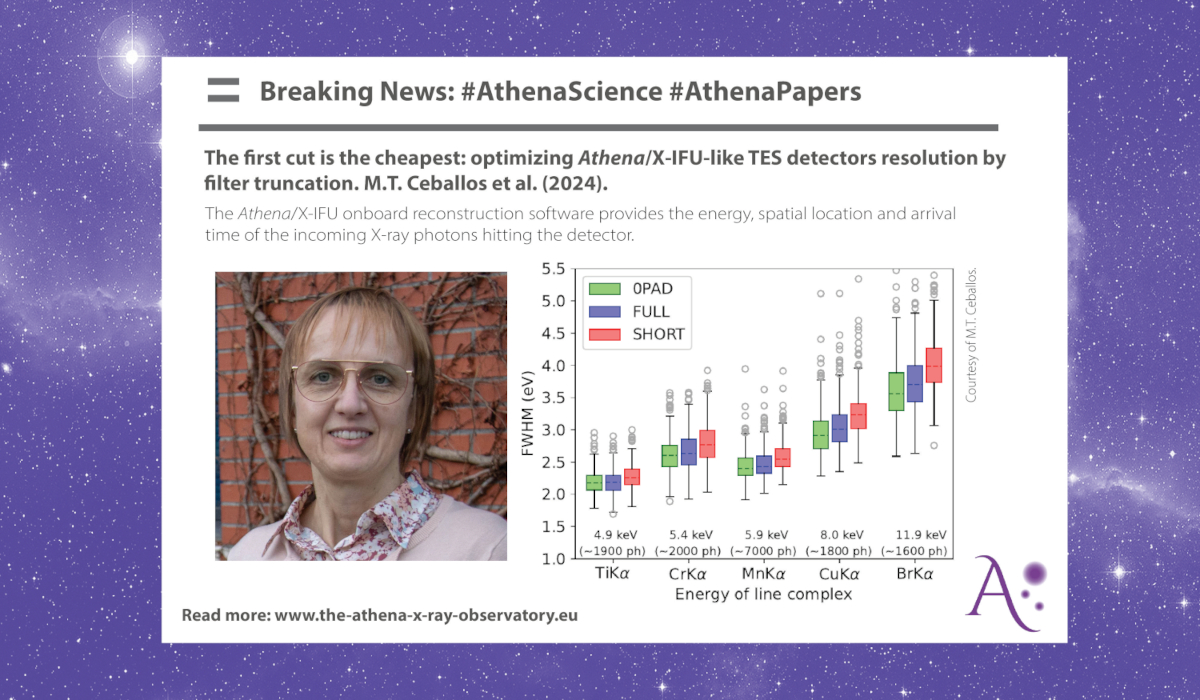
The first cut is the cheapest

Caption (inset figure): Boxplot diagram showing the improvement in resolution achieved by the 0-padding filter reconstruction for the analyzed line complexes of the laboratory data. Energy resolution values obtained with the 0-padding, FULL and SHORT filters are shown in green, blue and red, respectively.
Optimizing Athena/X-IFU-like TES detectors resolution by filter truncation
By M.T. Ceballos
The Athena/X-IFU onboard reconstruction software provides the energy, spatial location and arrival time of the incoming X-ray photons hitting the detector. Traditionally this kind of reconstruction has been made by means of an algorithm called optimal filter, where longer meant better.
However, in this study, we propose a new algorithm (we called 0-padding) where the length of the optimal filter is truncated, with the immediate benefits of reducing the computational cost and permitting a larger count rate of high-resolution photons. We thoroughly test this 0-padding technique using realistic simulations and real data acquired from NASA and NIST laboratories employing X-IFU-like TES detectors.
The conclusion of the analysis is that it achieves energy resolutions as good as those obtained with standard filters, even with those of larger lengths, across different line complexes and instrumental conditions.
Access to the manuscript in ADS.

